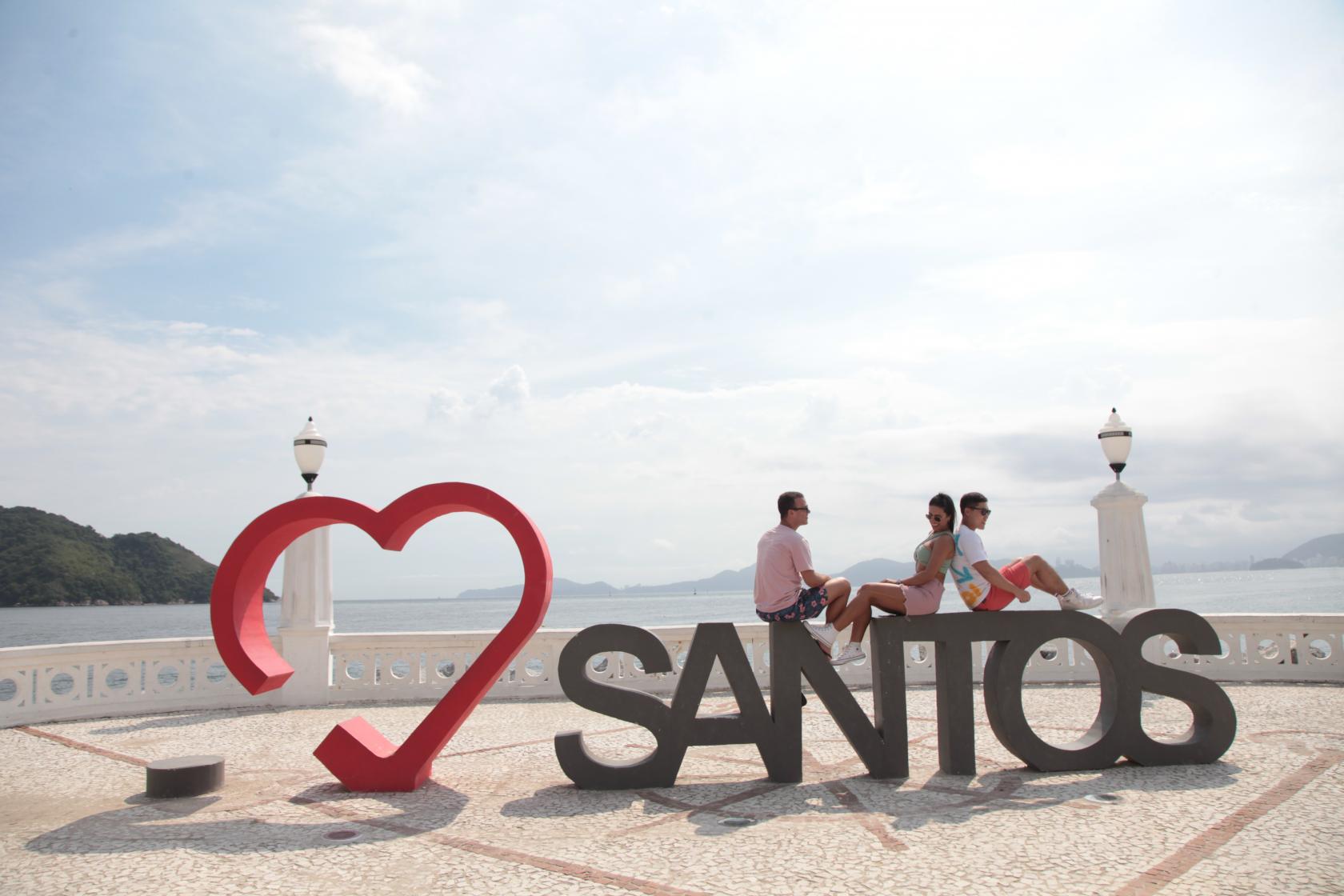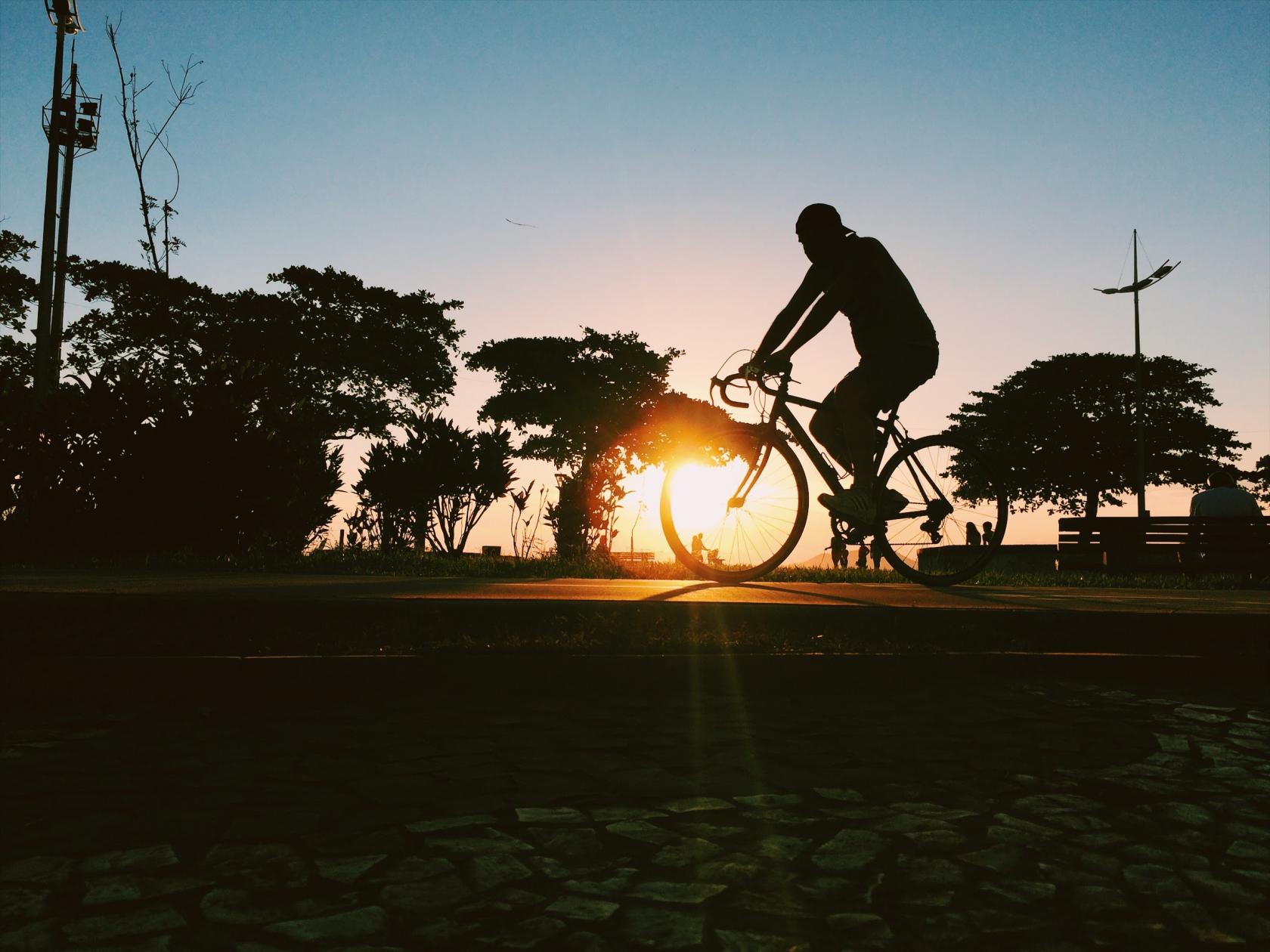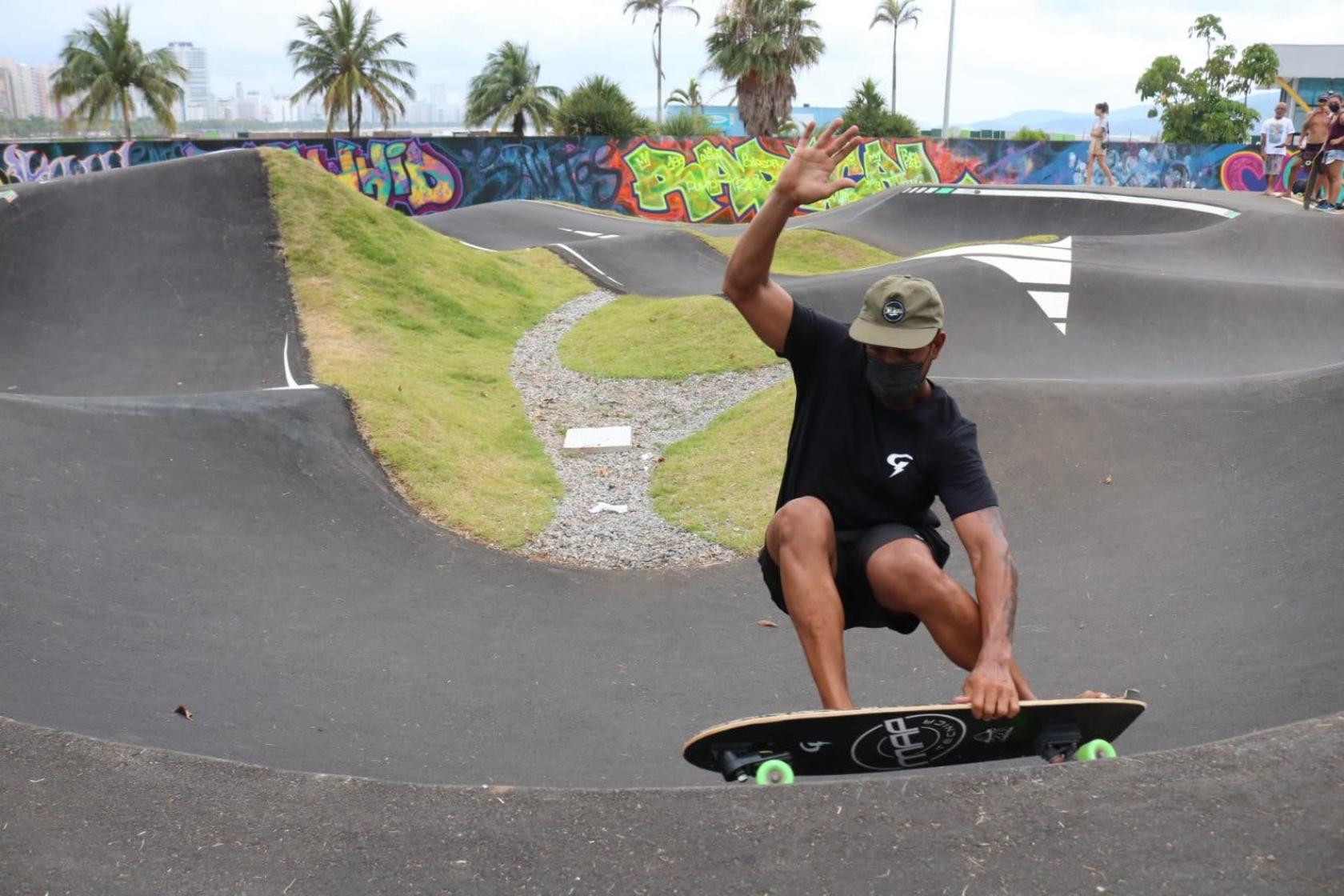Host City
A growing metropolis with caiçara simplicity
Located on the coast of São Paulo and 72 kilometers from the Capital, the City in quality of life ranks 6th in Brazilian municipalities, according to the Human Development Index (HDI) measured by the United Nations (UN) based on levels of expectation of life, education and GDP per capita.
The activities linked to the Port - the largest in Latin America, with 13 kilometers of extension and through which more than a quarter of all cargo that enters and leaves Brazil, are the main source of wealth for the Municipality, making Santos the city of the Baixada Santista Metropolitan Region, the most economically important and one of the richest in the country.
The sectors of tourism, service providers and fishing in general complete the list of major activities in the economy of Santos. On one hand, the thriving economy and on the other, its vocation for leisure. Santos' main attraction is the seven kilometers of beach, accompanied by the largest waterfront garden in the world - a title awarded by Guinness World Records.
On an equal footing with the gardens and the beach, as the main tourist attractions and postcards of the City, is the Historical Center. Neighboring the port complex, downtown keeps alive in its narrow and charming streets with cobblestones a past of glory with the commercialization of coffee, which has already figured as the main Brazilian export product. The City has also stood out in business tourism and ecotourism, since almost the entirety of its continental portion remains preserved, which demonstrates the priority for environmental conservation.
Due to its various economic, infrastructural and service characteristics, Santos has a prominent position on the national scene: it was elected the second best city to live in after the age 60 by the Urban Development Index for Longevity (IDL) - an initiative of the Instituto de Longevidade Mongeral Aegon - and has held the Title of Educating City since 2008, granted by the International Association of Educating Cities (Aice). Since 2015, the City has been part of the UNESCO Creative Cities Network.
Geographic data
- Population: 433.991 people (Estimated 2021 - Brazilian Institute of Statistical Geography /IBGE)
- Total area: 281,033km²
- Insular area: 39,4km²
- Continental area: 231,6km²
- Distance from the State Capital - São Paulo (SP): 72km
- Summer season: Dezembro a Março
- Anniversary: 26 de Janeiro
- Preserved area: 150km² (55.71%)
- Temperature: 25ºC - média anual
- Economic Aspect: as the largest city on the coast of São Paulo, it has the Port the main activity
- Human development Index: 0,840 (6º place in Brazil)
Site do IBGE - Outros dados gerais do município, Gráficos de população, Economia, Histórico
Economy
Port is still the main revenue generator, but the creative economy grows 156% in 8 years.
The economy of Santos has as its main income generator the Port, the main channel of entry and exit of cargo in Brazil, but the creative economy has become an important revenue generator for the City.
Santos breathes creativity and not even the restrictions imposed by the covid-19 pandemic were enough to shrink this market. In 2019, there were 13,642 creative economy activities registered in the City. In 2021, the number rose to 17,812, an increase of 30.5%. The growth rises to 156% if we consider the 2013 index (6,931).
And the international recognition of this growth came in 2015, the year that the City became part of UNESCO's network of creative cities in the cinema area. For 2022, even, the annual meeting of these cities is planned in Santos, an event that will place the Municipality at the center of gravity of the world's creative production, attracting visitors from various parts of the world.
Tourism, the service sector and commerce complete the main economic activities in Santos. The City has an annual GDP per capita of R$52,509.91, according to 2019 data from the IBGE.
The municipal budget is around R$ 3.7 billion in 2022, according to an estimate by the Municipal Planning Department (Seplan). In 2021, 6,312 new companies were opened, totaling 47,338 in the City. Of this number, 3,050 correspond to individual microentrepreneurs (MEIs) opened in the same year, reaching a total of 12,731 MEIs.
Enviorement
Santos is a protagonist in the defense of the Environment
Santos has always played a leading role in environmental issues, with national and international recognition. The relationship of preservation and respect for the sea begins early and children learn at school, as it is the first city in the world to consider oceanic culture as a public education policy, even being recognized by the Intergovernmental Oceanographic Commission (IOC) of Unesco.
In 2022, for the third consecutive year, it is the leader of the Sanitation Ranking among the 100 largest Brazilian municipalities, in a study promoted and published by Instituto Trata Brasil, which since 2009 has monitored sanitation data in the country.
Santos is still an important ecological sanctuary of natural wealth, it has an extensive reserve of Atlantic Forest preserved in its territory, with great biodiversity, concentrated almost entirely in the continental portion of the Municipality.
Speaking of biodiversity, on the Island we have the Municipal Orquidário, with 24 thousand square meters of pure green, a large outdoor orchid nursery and more than three thousand specimens of 70 species and about 450 animals.
In the Northwest Zone, the Chico Mendes Municipal Botanical Garden houses a living collection of more than 300 species from the Amazon and Atlantic Forest, including native fruit trees, palm trees, hardwoods and other endangered species. All this in 90 thousand meters of green area.
In addition, it has green areas on the slopes of the hills and, of course, the largest Beach Garden in the world (recognized by Guinness World Records).

TOURISM
The city belongs to the vacationer, the adventurer, the trailblazer, the cruiser...
Beach, history, culture, adventure. Attractions of the most diverse natures makes Santos a perfect place to visit on foot. The City received about 2.2 million tourists in the 2022 summer season. With seven kilometers of beaches and 13 kilometers of pier, Santos also has a Historical Center with the famous cable car that imitates the extinct and popular means of transport from the 20th century, and which became a trademark of the City.
The Center offers dozens of tourist attractions such as the José Bonifácio Palace, where the City Hall works, the Official Coffee Exchange – marking a period of thriving economy, at the beginning of the 20th century, Valongo Sanctuary, Cathedral, Monte Serrat, Valongo and the Pele Museum. Engenho dos Erasmos, the first known sugar mill in Brazil, is another historical treasure in the City, on the other side of the territory, in the Northwest Zone.
The Municipal Aquarium, the Orquidário (in the Orla region) and the Botanical Garden (in the Northwest Zone) keep precious pieces of nature and biodiversity. The Memorial das Conquistas, in Vila Belmiro, holds the history of a team that made the City known worldwide.
Santos is the capital of maritime cruises, with the Giusfredo Santini Passenger Terminal being the busiest in the country.
Ecotourism is another segment increasingly explored in the Santos region, since 85% of its area is in the continental portion and is, for the most part, preserved. This paradisiacal setting is composed of waterfalls that form natural toboggans, rivers of crystal clear water, birds and animals, as well as historical ruins, which can be visited on tours monitored by accredited tourism agencies.
Business tourism also grows rapidly in the Municipality and is already responsible for most of the movement in the City during the year. The City also has the Blue Med Convention Center, a space made up of a fair and exhibition pavilion, with 9,000 m² on the ground floor and convention and concert halls on 4,500 m² and capacity for 3,200 people on the 1st floor. An important space for the expansion of business tourism in the region.
Port
Santos is Port, in essence and in history
The trajectory of Santos is intertwined with the history of its Port, a giant 13 kilometers long, with a share of the Brazilian trade flow that reached 28.3% in January 2022.
The official inauguration took place on February 2, 1892, when Companhia Docas de Santos delivered the first 260 meters of pier in Valongo. The episode initiated a leap of economic development in the City. However, the port for mooring began in the 16th century and was located in the bay of Santos. The transfer of the pier to the estuary channel, in waters less vulnerable to attacks, resulted in the formation of a village in the 1540s. In 1546, this village was elevated to the status of Vila do Porto de Santos.
Three centuries later, the economy of the State of São Paulo gained an injection of spirit with the São Paulo Railway, which began to operate in 1867, a time of expansion in coffee production, connecting Baixada Santista to the capital and the countryside. Investments in the Port to transport cargo were inevitable.
After years of work, Porto was inaugurated in 1892 and, from then on, experienced great growth, exporting all kinds of inputs: sugar, coffee, oranges, cotton, fertilizer, coal, citrus juices, soybeans, vehicles, bulk and liquids. Since that time, according to the Port Authority (which has managed the complex since 1980), the Port has handled more than 1 billion tons of cargo.

MOBILITY
With 57.4km of bike lanes, 42 bus lines and the first tram in Brazil, there is no shortage of options for Santista to get around
Since 2015, Santos has had the VLT – Light Rail Vehicle – as a public transport option. The medium is considered a model of efficiency and accessibility around the world for having low environmental impact and greater energy efficiency than cars, buses, trains or subways.
It is 11.1km long, connecting the Barreiros Terminal, in neighboring São Vicente, to Porto Station, on Av. Counselor Nébias in Santos. More than 70,000 passengers use the tram per day, according to data from the Metropolitan Company of Urban Transport (EMTU).
If you want to leave your car at home, there are plenty of options to move around the City, after all, there are 42 municipal bus lines that connect all neighborhoods with comfort and agility.
Not to mention bicycles, a traditional means of transport from Santos. Due to the stimulus it gives to the use of bicycles, Santos is considered a "bicycle-friendly city" by the ABC (Brazilian Association of Cyclists). The condition of being an almost completely flat city favors the adhesion to this mode of transport which, in addition to being economical, is healthy and environmentally friendly.
With 57.4 kilometers, Santos' cycling network continues to grow. Exclusive bicycle lanes connect the waterfront to the Center of Santos, the border with São Vicente to the Port area and the East Zone to the Northwest Zone

SPORT VOCATION
Santos the most sporting city in Brazil
Since the 1950s, Santos has been considered the “Most Sporting City in Brazil”, a title granted by Jornal O Globo in 1956. And its fame is no accident. Santos and Santistas (people from Santos) breathe the sport to this day.
At the time, nautical sports were essential to show the sporting vocation of the Municipality. With seven kilometers of beach, it is impossible to separate Santos from the sea. An example is surfing, a sport in which Brazil dominates international competitions and won Olympic gold. The modality had Santos as a precursor city in the country.
The pioneers of surfing in Brazil were: Osmar Gonçalves, Juá Hafers, in addition to Thomas and Margot Rittscher, who rode the country's first board and caught the first Tupiniquin waves on Gonzaga beach. This made the City known as the “cradle of surfing”. To maintain the tradition of pioneering in the sport, it was here that the first public surfing school in the country and also the first adapted surfing school emerged.
In addition to surfing, canoeing, stand-up and sailing are some of the sports that dominate the seas of the City.
But it's impossible to talk about sport and not mention Santos Futebol Clube, which won all the titles possible and took the city's name to the whole world, especially with the team that brought the attack line that is practically a prayer for any football lover. football: Dorval, Mengálvio, Coutinho, Pele and Pepe.
Santos also has Portuguesa Santista and Jabaquara, founding members of the São Paulo Football Federation and responsible for revealing great names in world football. In fact, the "Breton sport" is practiced along almost the entire length of the beach, which is also home to hundreds of footvolley players, in addition to the traditional amateur football fields.
But it's not just football that brought glories and achievements in the sport. Here, Olympic medalists emerged or developed, such as Rogério Sampaio and Danielle Zangrando in judo and Ana Marcela Cunha in swimming, in addition to being a Paralympic power: like the gold medal won by Beth Gomes.
Santos was also the stage for the creation of a genuinely national sport: the tamboréu. A group of friends invented the sport that resembles tennis, but with the use of a kind of wooden tambourine, in 1937
There is no shortage of options for Santos to move around, the Municipality has several public and private sports centers, Olympic swimming pools, soccer fields, athletics tracks, soccer stadiums, multi-sport gyms, artistic gymnastics, simple and multi-sport courts and, it is of course, the edge of the beach, which doubles as an outdoor gym